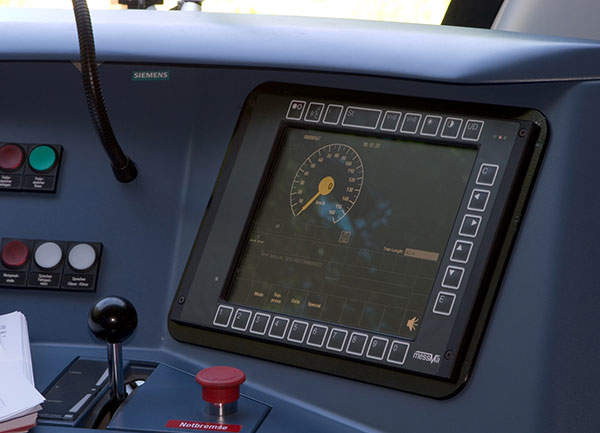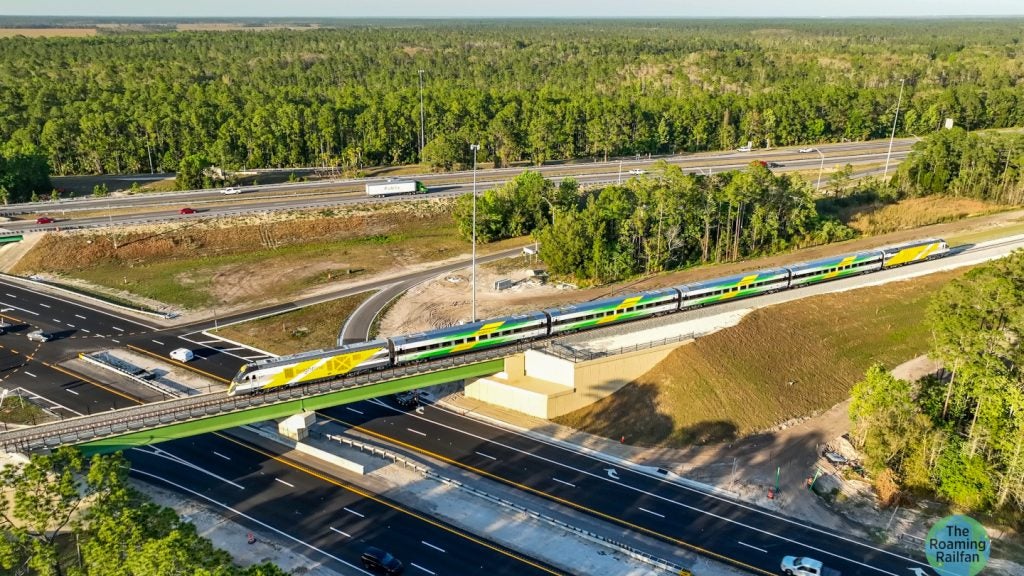The European Railway Traffic Management System (ERTMS) is a major industrial project designed to enhance cross-border interoperability through Europe by creating a single standard for railway signalling.
ERTMS is a continuous communication-based signalling system. The project is being implemented by eight UNIFE (the Association of the European Rail Industry) members with the concerted effort of EU, railway stakeholders and the GSM-R (Global System for Mobile Communications – Railway) industry. The UNIFE members include Alstom Transport, Ansaldo STS, AZD Praha, Bombardier Transportation, Invensys Rail, Mermec, Siemens Mobility, and Thales.
As part of this overarching project, the EU initiated the creation of six legally binding ERTMS corridors and executed an EU-wide deployment plan. A European ERTMS Coordinator was also appointed to ensure the successful deployment of the system.
By May 2020, more than 6,000km of lines and more than 3,600 vehicles were equipped with ERTMS in Europe.
Approximately 50,000km of the lines and up to 30,000 trains in the region are planned to be equipped with ERTMS by 2030. ERTMS is fast gaining recognition as a global signalling standard. As of 2019, more than 105,185km of railway tracks and 13,219 vehicles across the world are equipped with ERTMS.
The rationale for ERTMS
More than 20 different national signalling and speed control systems exist in the European rail system, with each one incompatible with the other. It creates an obstacle to the free flow of rail traffic across Europe.
Thalys high-speed train, which connects Paris, Brussels, Cologne and Amsterdam, is equipped with a minimum of seven different systems for its cross-border operation. The ongoing deployment of a single common system, such as the ERTMS, aims at removing this technical barrier to cross-border passenger and freight movement.
The ERTMS also saves maintenance costs, improves safety and increases traffic capacity. It reduces the headway between trains and allows for a maximum speed up to 500km/h. It increases the current capacity by up to 40% without the need for any infrastructure upgrades.
ERTMS project details
Research projects to design a new generation of signalling and speed control systems were carried out in the early 1990s by several EU member states. With the active support of the EU, these research projects were merged to create a single project called ERTMS.
The charge of developing the ERTMS was first given to the European Association for Railway Interoperability (AEIF) that brought together the representatives of infrastructure managers, railway companies and industry. AEIF was later replaced by the European Railway Agency (ERA) for the same role.
In 2000, UNISIG, an industrial consortium comprised of European signalling companies, finalised the technical specifications of the ERTMS. A team led by ERA continuously reviewed the specifications since then to adapt ERTMS to the railway’s needs.
Spain has the longest high-speed railway network in Europe and the second highest in the world, after China. The country’s total network accounts to 2,665km, with five dedicated lines. These lines establish high speed links between the largest cities of Spain and the capital city of Madrid.
In 2005 and 2008, two successive memorandums of understanding were signed by the European Commission and the railway stakeholders to further deploy ERTMS on the Europe’s rail network. Six ‘priority’ corridors were identified for the deployment with the joint financial support from the EU and its member states for both infrastructure and onboard installation of ERTMS.
With the adoption of the European ERTMS Deployment plan in 2009, the creation of six ERTMS corridors along with additional freight lines became mandatory. The implementation deadlines range from 2015 to 2020, depending on the section of lines.
The EU is supporting the development of ERTMS through the mechanism of the TEN-T programme, Structural and Regional Funds, and Cohesion Funds.
ERTMS infrastructure and technology
ERTMS has two main components, which include GSM-R, a radio system for enabling communication between the driver and the traffic management centre, and ETCS, an automatic control system that helps to control speed limits of a train by communicating with the driver.
There are three different levels of ERTMS/ETCS application, L-1, L-2 and L-3, based on the need for existing railway infrastructure.
L-1 is as an add-on designed for conventional lines already equipped with lineside signals and train detectors. Balises are installed on the trackside adjacent to the lineside signals to transmit information to the control centre and the train. Information from the balises is used to calculate the maximum speed of the train by the ETCS on-board equipment, which helps to determine when and where to break the train. In addition to Eurobalises, EuroLoop (loop infill) or a radio-based solution (radio infill) can be implemented for continuous transmission of data over a longer distance.
In contrast, L-2 does not require line-side signals. The movement authority communication occurs directly from a Radio Block Centre (RBC) to the on-board unit using a GSM-R. Continuous communication system of the L2 allows the train to reach its optimum or maximum speed while maintaining a safe braking distance.
L-3, which is still in conceptual stage, is based on moving block technology. It involves use of special equipment within the train to continuously supply data on the train’s position to the control centre, rather than by track based detection equipment. The train thus continuously monitors its own position.
ERTMS is designed in a flexible way that allows for smooth migration from one level to other level of its application. It is also fully interoperable implying that any train fitted with the system can run on any other line equipped with a similar one. The trackside infrastructure from an ERTMS supplier can also be universally used by any train manufactured by other ERTMS suppliers.
Suppliers of European Railway Traffic Management System
The major suppliers of ERTMS solution include Alstom, Siemens, Ansaldo, AZD Praha, Bombardier, Invensys, Mermec, and Thales.
ERTMS installed railway lines in Europe
The six priority corridors identified by the European Commission for the deployment of ERTMS include Corridor A from Rotterdam to Genoa, Corridor B from Stockholm to Naples, Corridor C from Antwerp to Basel, Corridor D from Budapest to Valencia, Corridor E from Dresden to Constanta, and Corridor F from Aachen to Terespol.
The European ERTMS Deployment Plan foresees installation of the ERTMS equipment to more than 10,000km of railway lines by 2015 and 25,000km by 2020. Several key European freight lines have also been identified for ERTMS deployment.
Investments amounting to €5bn ($6.48bn) have been planned for the deployment of ERTMS in Europe during 2007-13.
The cross-border lines already running with ERTMS are Vienna-Budapest line, ERTMS (Level 2) High Speed Line between Liege (Belgium) and the German border, and the Thalys line between Amsterdam (Netherlands) and Antwerp (Belgium).
Major contracts were signed for the deployment of ERTMS in Denmark, Switzerland, and Belgium.
ERTMS in other parts of the world
ERTMS investments by non-European countries represent more than 50% of the global ERTMS investment worldwide. Increasing investment on ERTMS has been witnessed in China, India, South Korea, Taiwan, Saudi Arabia, UAE, Morocco, Algeria, Turkey, Kazakhstan, Indonesia, Brazil, Mexico, Australia, and New Zealand.












